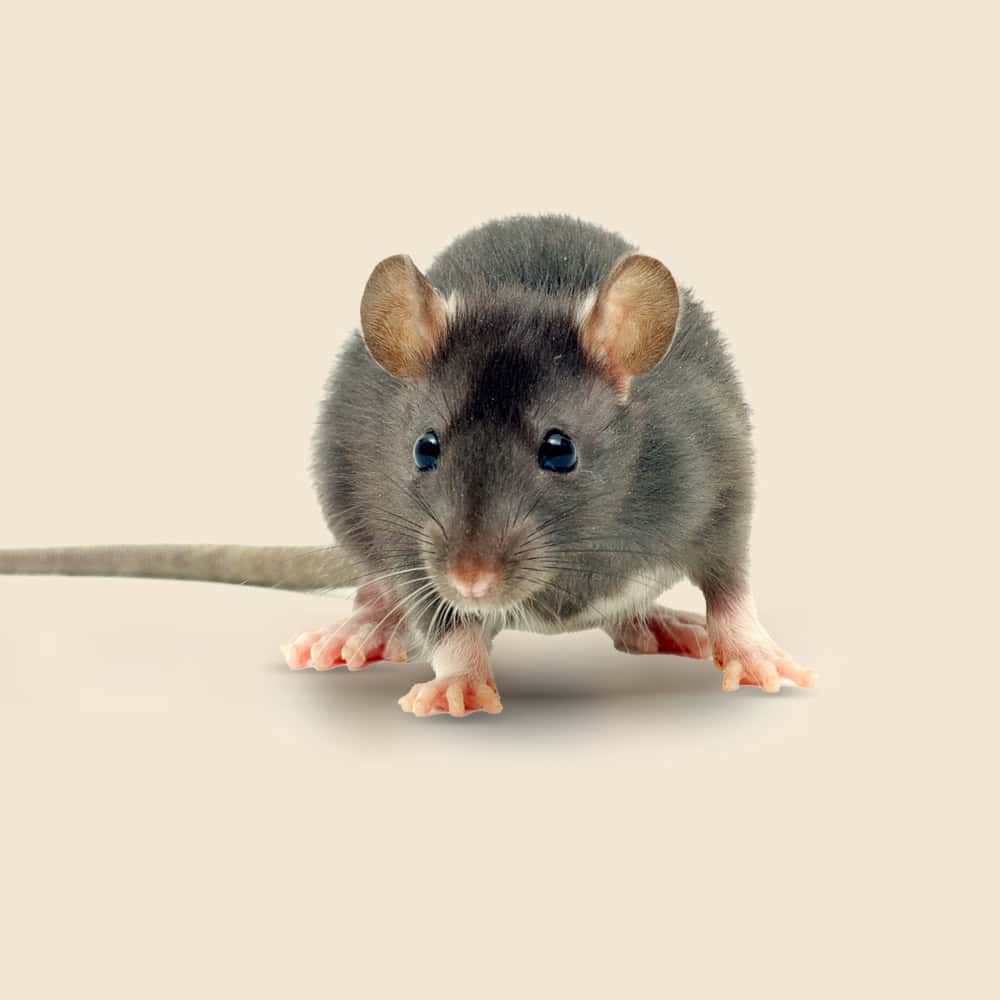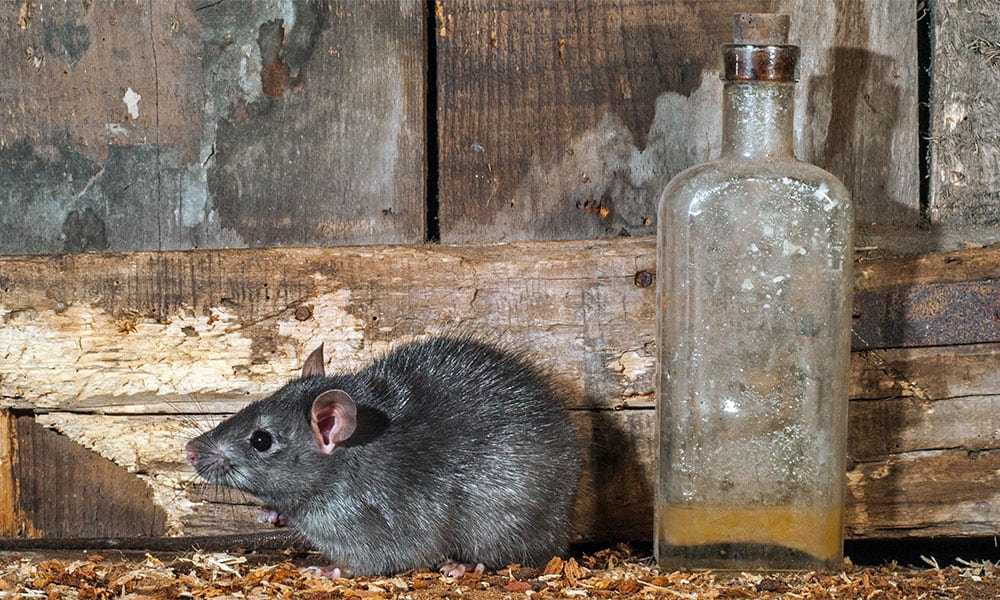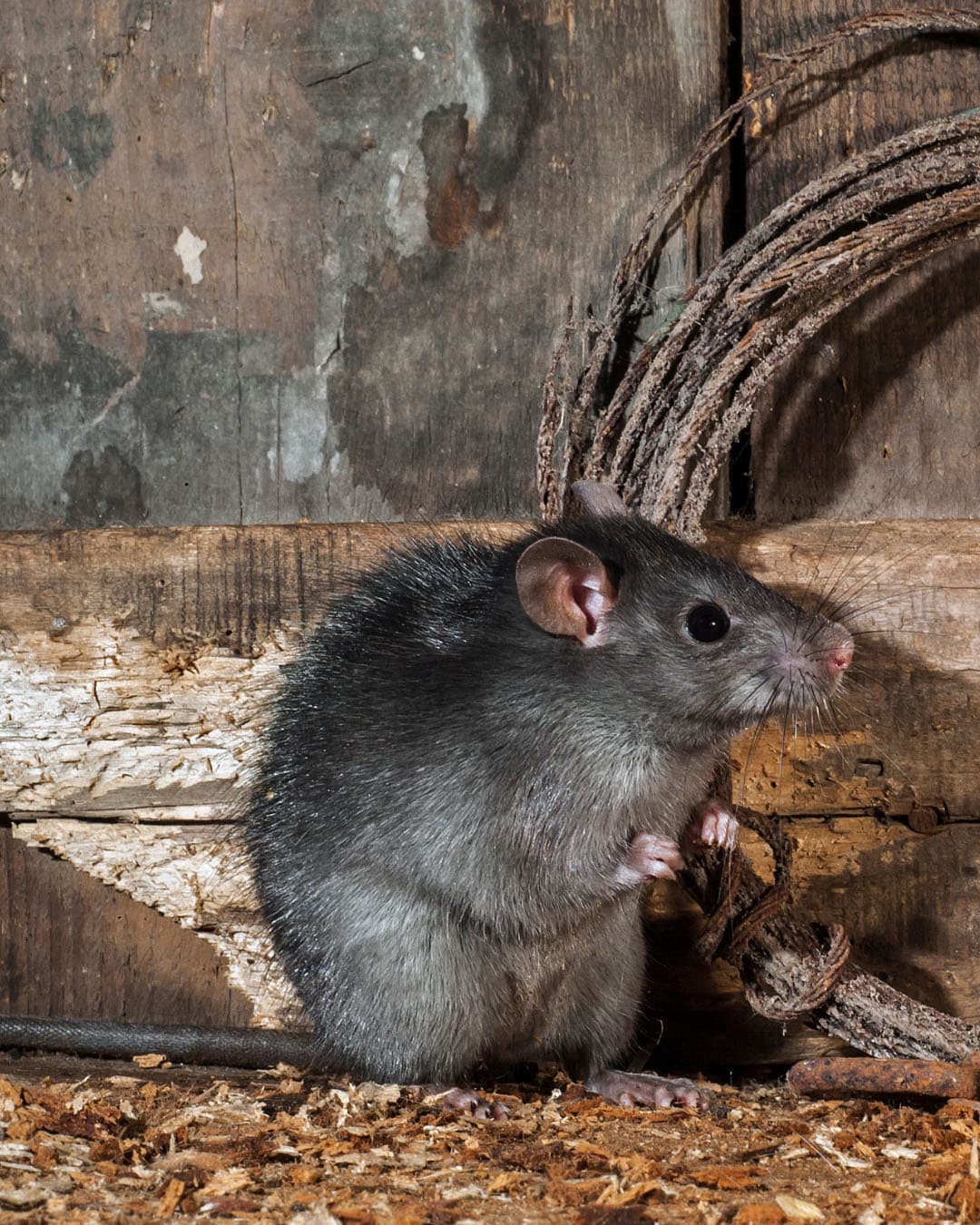Roof Rat Facts & Information
Roof rats, also known as black rats or ship rats, are agile and intelligent rodents commonly found in urban areas. They are notorious for invading homes, particularly in attics and high spaces, where they can pose significant health risks and cause property damage.

Rattus rattus
What You Need To Know About Roof Rats
What do roof rats look like?
Roof rats, also known as black rats or ship rats, are slender rodents measuring about 6 to 8 inches in body length, with tails that can be even longer. They have large ears, a pointed snout, and smooth fur that is typically black or dark brown, with a lighter underside. Their long tails are hairless and scaly, helping them maintain balance while climbing.
What do roof rats eat?
Roof rats are omnivorous and have a diverse diet that includes fruits, vegetables, grains, nuts, and seeds. They are particularly fond of citrus fruits and can also scavenge for food in garbage or pet food. Roof rats have strong teeth and can gnaw through various materials to access food sources.
What sort of habitat do roof rats live in?
Roof rats prefer high places and are often found in trees, attics, and rooftops. They are adept climbers and can easily navigate through buildings and overhead spaces. Roof rats tend to establish their nests in sheltered areas that offer easy access to food and water, making urban and suburban environments ideal habitats.
How do roof rats commonly behave?
Roof rats are primarily nocturnal, being most active at night when they search for food. They are social animals and often live in groups, communicating through vocalizations and scent markings. Roof rats are known for their agility and speed, which helps them evade predators and navigate their environments quickly.
Did you know this about roof rats?
Roof rats are highly adaptable and can reproduce rapidly, with a female capable of having up to 40 offspring in a year under optimal conditions. They are considered significant carriers of diseases and can pose health risks to humans through their droppings and urine. Interestingly, roof rats were historically known for their role in the spread of the bubonic plague, as they infested ships and coastal towns, leading to their association with maritime activities.
Understanding Roof Rat Infestations
Understanding roof rat infestations is essential for effective management. Roof rats typically measure about 6 to 8 inches in body length, with long, slender bodies and tails that can be longer than their bodies. They have large ears, pointed snouts, and glossy black or dark brown fur. Roof rats are excellent climbers and often enter homes through trees, vines, and utility lines, making their nests in attics, rafters, and other elevated areas. Their nocturnal nature makes them difficult to spot until an infestation has already taken hold.

How Hearts Handles Roof Rat Treatment
Hearts Pest Management employs an integrated pest management approach to handle Roof Rat infestations.
Roof Rat Inspection
Roof Rat Treatment
Roof Rat Prevention
Educational Resources

Think You Might Have a Roof Rat Infestation?
At Hearts Pest Control, we understand the challenges associated with Roof Rat infestations and are here to provide professional solutions tailored to your needs. Flourishing in warm and humid climates, they are prevalent in many regions, including San Diego County, Orange County, and Los Angeles County.